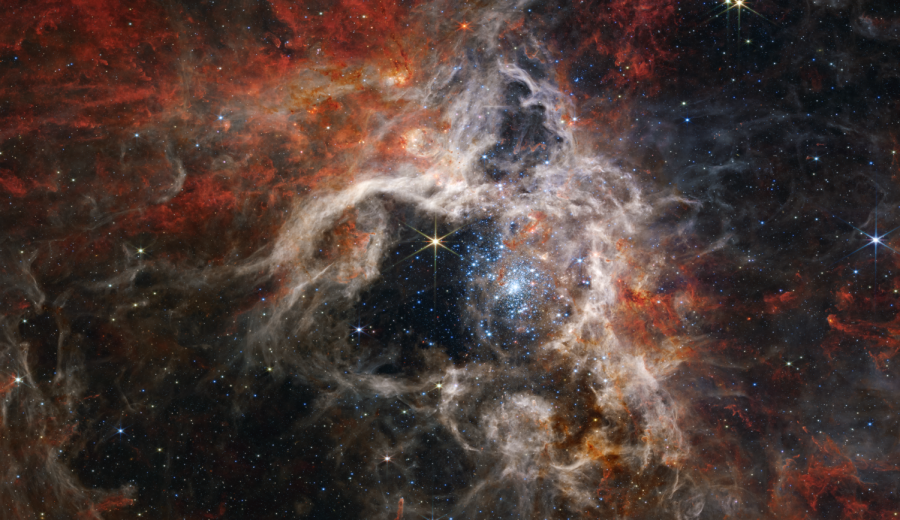NASA Catches ‘Tarantula Nebula’ Photo in its Webbs (Telescope)
James Webb Telescope captures incredible galactic scene
September 27, 2022
On September 6th, 2022, NASA captured one of the most beautiful moments ever caught by a camera. From 161,000 light years away, the James Webb Space Telescope discovered a nebula in the Large Magellanic Cloud galaxy. The nebula was named the Tarantula Nebula from its resemblance to the entrance of a tarantula’s burrow. Astronomers have learned that the Tarantula Nebula is the best region to form stars in our galaxy, the nebula earned this title due to its elemental composition and ability to make the largest and brightest stars. It is even better at star-forming than some of our neighboring galaxies.
The bright blue group of spots in the center of the James Webb photo is a cluster of stars that help to create the nebula’s shape with their radiation. The stellar winds from these stars condense the nebula to assist in building protostars that will also eventually shape the nebula. The nebula will not keep its shape and is constantly changing due to the gravitational pull of the stars and the consumption of resources needed to keep the stars alive.
The James Webb Space Telescope is used to help us understand our galaxy and what else lies beyond it through the power of near-infrared and mid-infrared imaging. Through this technology, astronomers aim to discover the universe’s origins and observe some of the first-ever galaxies using this powerful telescope.



